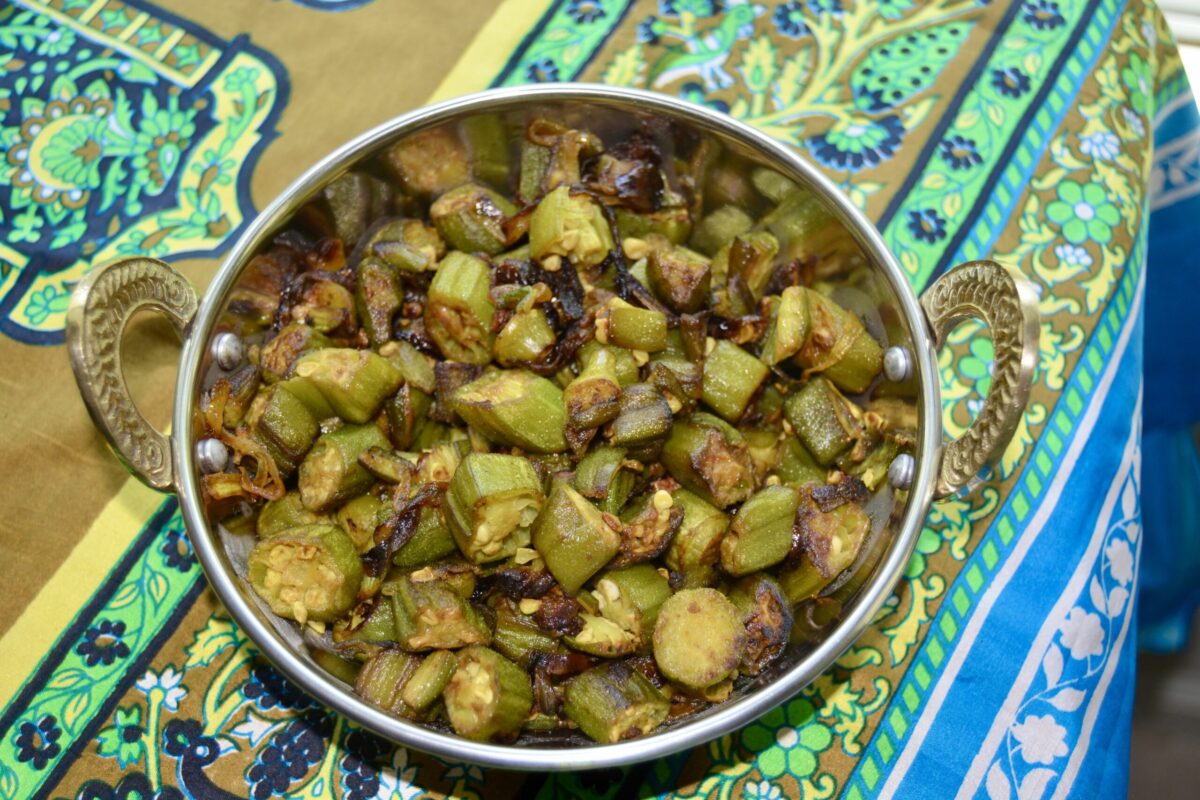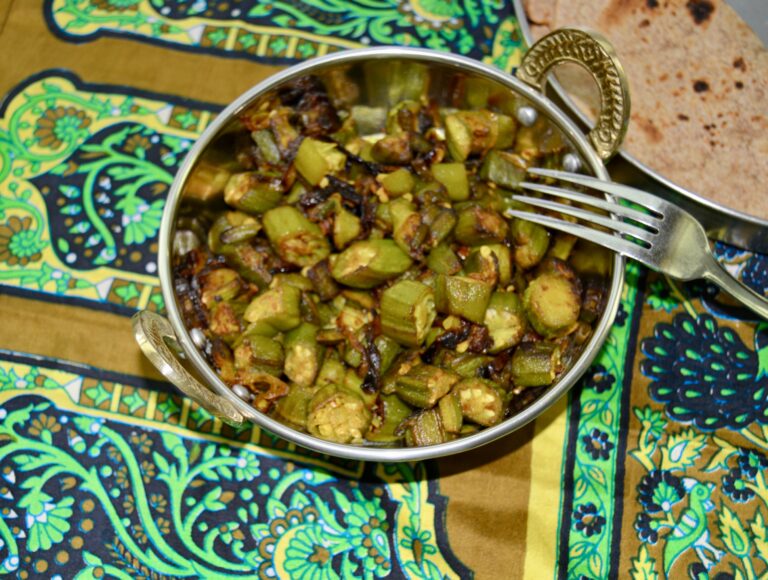It is a Saturday afternoon, and our cook is in the kitchen, ready to cut a huge pile of freshly washed bhindi (okra). My twin sister and I stand patiently by, waiting for him to start cutting the bhindi. He slices the heads and tails off, and then the bhindi is chopped for the sabzi.
As soon as he’s done, we quickly pick up the cut heads and stick them all over our faces. Walking out of the kitchen, we go in search of our younger siblings and pretend that we have a dreadful and mysterious skin disease. Of course, they don’t buy it. But our two-year-old baby sister catches sight of us and freaks out.
We quickly remove the bhindi heads from our faces before the situation escalates to a mom appearance! The bhindi heads are slimy, so a swift wipe with the edge of our frocks (dress) takes care of that mess, and we rush to cajole our sister.

Bhindi Sabzi (Sauteed Okra)
Ingredients
- 1 ½ lb fresh okra (or 1 lb frozen okra (which, in the interest of time, I prefer))
- ½ large yellow onion (or 1 medium shallot) (sliced fairly thin)
- 1 dry red chili broken in half ((optional / to your taste))
- 1 1 tsp turmeric
- 1 tsp cumin powder
- ¼ tsp chili powder ((optional / to your taste))
- ¾ tsp salt ((or to your taste))
- 2-3 tbsp cooking oil
Instructions
- Wash the bhindi, then spread them on a paper towel to dry.
- Cut the heads off the bhindi and then slice evenly, about ½ inch thick. The knife gets slimy, so keep a paper towel handy to keep wiping the blade. If using a frozen pack, pour it into a colander and toss or shake it a few times to eliminate any ice crystals.
- In a broad (10 inch) skillet heat, 2-3 tablespoons of the oil on medium heat.
- Add the broken red chili, stir for 30 seconds, and then add the sliced onions.
- Sauté the onions for 2 minutes until tender.
- Add turmeric, cumin, and chili powder.
- Stir the spices into the onions, 30-40 seconds.
- Now add the bhindi and spread it out on the pan.
- Cover the pan and let cook on medium-low for 2minutes, then uncover, so the vegetable does not get slimy.
- Stir carefully and occasionally to brown the bhindi on all sides. It is important to do this so that the bhindi remains intact—especially the frozen ones.
- When the moisture evaporates, 10-15 minutes (a little longer for the frozen) turn off the heat, cover with a splatter guard so that no moisture can build up, and make them soggy.
- If the fresh bhindi gets too dry when cooking, then you can cover it.
- Let it rest for about 5 minutes before serving.




Comments are closed.